-
 Bitcoin
Bitcoin $112400
1.25% -
 Ethereum
Ethereum $4328
1.13% -
 XRP
XRP $2.974
3.92% -
 Tether USDt
Tether USDt $0.9999
-0.01% -
 BNB
BNB $878.4
0.50% -
 Solana
Solana $215.7
6.80% -
 USDC
USDC $0.9997
-0.02% -
 Dogecoin
Dogecoin $0.2388
7.84% -
 TRON
TRON $0.3321
0.69% -
 Cardano
Cardano $0.8642
4.51% -
 Hyperliquid
Hyperliquid $50.59
7.60% -
 Chainlink
Chainlink $23.10
4.11% -
 Ethena USDe
Ethena USDe $1.001
-0.01% -
 Sui
Sui $3.464
2.75% -
 Stellar
Stellar $0.3761
5.01% -
 Bitcoin Cash
Bitcoin Cash $587.7
-2.50% -
 Avalanche
Avalanche $25.56
5.12% -
 Hedera
Hedera $0.2262
3.82% -
 UNUS SED LEO
UNUS SED LEO $9.527
-0.32% -
 Litecoin
Litecoin $112.8
-1.31% -
 Cronos
Cronos $0.2520
-2.52% -
 Toncoin
Toncoin $3.092
-0.18% -
 Shiba Inu
Shiba Inu $0.00001292
4.42% -
 Polkadot
Polkadot $4.040
1.63% -
 Uniswap
Uniswap $9.631
3.70% -
 Dai
Dai $0.9997
-0.01% -
 Ethena
Ethena $0.7777
5.99% -
 World Liberty Financial
World Liberty Financial $0.2089
-8.48% -
 Monero
Monero $270.0
-0.51% -
 Aave
Aave $304.4
1.78%
How to choose the right mining software?
Mining software bridges your hardware to the blockchain, enabling efficient cryptocurrency mining by supporting specific algorithms, optimizing performance, and ensuring security.
Sep 08, 2025 at 08:18 am
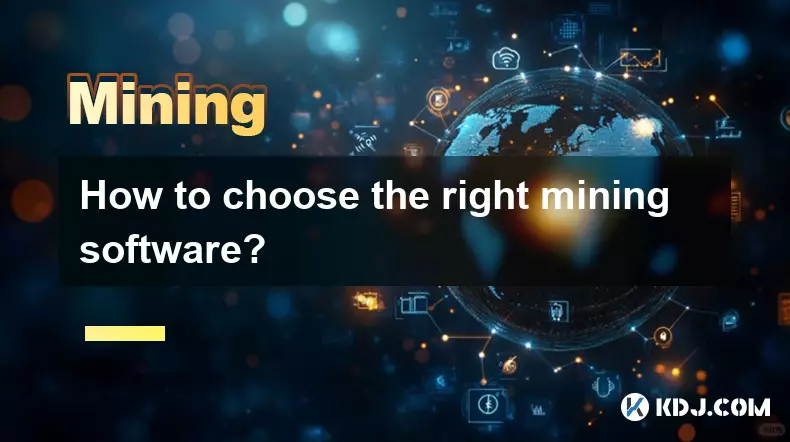
Understanding the Role of Mining Software in Cryptocurrency
1. Mining software acts as the bridge between your hardware and the blockchain network, enabling your machine to solve complex mathematical problems and validate transactions. Without reliable software, even the most powerful mining rig cannot contribute effectively to a blockchain.
2. Different cryptocurrencies require different mining algorithms, meaning the software must support the specific algorithm of the coin you intend to mine. For example, Bitcoin uses SHA-256, while Ethereum historically used Ethash before its transition to proof-of-stake.
3. The software controls hash rate, monitors system temperature, and manages power consumption, making it a critical factor in mining efficiency. Poorly optimized software can lead to underutilized hardware and increased electricity costs.
4. Open-source mining software often benefits from community audits and frequent updates, increasing transparency and security. However, proprietary software may offer better customer support and user-friendly interfaces.
5. Compatibility with your operating system—whether Windows, Linux, or macOS—is essential. Some mining programs are only available on specific platforms, limiting your options based on your setup.
Key Factors to Evaluate When Selecting Mining Software
1. Always verify the software’s compatibility with your mining hardware. ASICs, GPUs, and FPGAs each require different software configurations. For instance, CGMiner is widely used for ASIC devices, while PhoenixMiner is optimized for AMD and NVIDIA GPUs.
2. Look for software that provides real-time performance tracking, including hash rate, accepted/rejected shares, and thermal monitoring. Dashboards that display this data help miners adjust settings on the fly to maximize output.
3. Security is non-negotiable. Download mining software only from official sources to avoid malware-infected versions that could steal your earnings or hijack your system for unauthorized mining.
4. Check if the software supports multiple mining pools. Being able to switch pools easily allows you to choose the one with lower fees, better payout structures, or closer server locations to reduce latency.
5. Consider the user interface. Beginners may prefer software like EasyMiner, which simplifies configuration, while advanced users might opt for command-line tools like BFGMiner for greater control over tuning parameters.
Popular Mining Software and Their Use Cases
1. CGMiner remains one of the most versatile and long-standing options, supporting both GPU and ASIC mining. It’s highly configurable and works across multiple platforms, though its command-line interface can be intimidating for new users.
2. Claymore’s Dual Miner gained popularity for its ability to mine Ethereum and a secondary coin simultaneously, maximizing profitability. Although development has ceased, many forks and updated versions continue to circulate in the community.
3. PhoenixMiner is known for its high efficiency and low developer fee, making it a favorite among Ethereum miners before the network’s shift. It automatically optimizes settings and reconnects after disruptions, reducing downtime.
4. HiveOS is not a mining software per se but an operating system designed specifically for mining rigs. It integrates multiple mining applications and allows remote management via a web interface, ideal for large-scale operations.
5. T-Rex Miner is a modern GPU miner that supports a wide range of algorithms including KawPow and BeamHash. It’s praised for its stability and consistent performance, particularly on NVIDIA cards.
Frequently Asked Questions
What is a developer fee in mining software?Some mining software deducts a small percentage of your earnings—typically 1% to 2%—as a developer fee. This funds ongoing maintenance and updates. Software like CGMiner is fee-free, while others like T-Rex Miner include a built-in fee unless a paid version is purchased.
Can I use the same mining software for different cryptocurrencies?Yes, if the software supports multiple algorithms. For example, NBMiner can mine coins using Equihash, Cuckoo Cycle, and Octopus. Always confirm algorithm compatibility before setup.
Is it safe to use third-party forks of popular mining software?Proceed with caution. While community forks may offer enhanced features, they can also introduce security risks. Verify the source, check user reviews, and scan files for malware before installation.
How do I know if my mining software is performing optimally?Monitor your hash rate and compare it to expected benchmarks for your hardware. Sudden drops in performance, frequent crashes, or unusually high temperatures may indicate misconfiguration or software issues.
Disclaimer:info@kdj.com
The information provided is not trading advice. kdj.com does not assume any responsibility for any investments made based on the information provided in this article. Cryptocurrencies are highly volatile and it is highly recommended that you invest with caution after thorough research!
If you believe that the content used on this website infringes your copyright, please contact us immediately (info@kdj.com) and we will delete it promptly.
- Bitcoin to $200,000? Tom Lee's Bold Prediction and the Crypto Market's Q4 Surge
- 2025-09-09 02:25:16
- BlockchainFX: Are Whales Diving into the Next Big Crypto Investment?
- 2025-09-09 02:25:16
- Meme Coins, Market Cap, and DeFi: A New Yorker's Take on the Crypto Circus
- 2025-09-09 00:25:15
- Bitcoin Locked Away: Is the Next Move a Breakout?
- 2025-09-09 00:25:15
- Lyno AI: The AI Token Revolutionizing Crypto Buying
- 2025-09-09 01:05:16
- Bitcoin, Corporate Treasury, and Strategy: A New Era of Financial Management
- 2025-09-09 01:05:16
Related knowledge
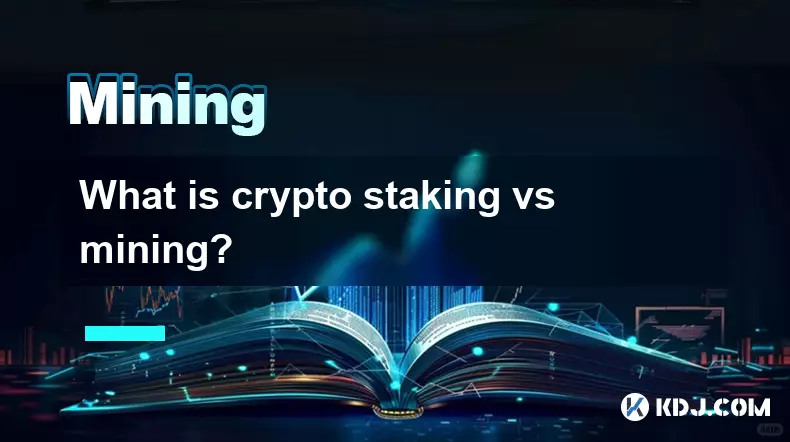
What is crypto staking vs mining?
Sep 08,2025 at 11:36pm
Crypto Staking: A Modern Approach to Network Validation1. Crypto staking involves locking up a certain amount of cryptocurrency in a wallet to support...
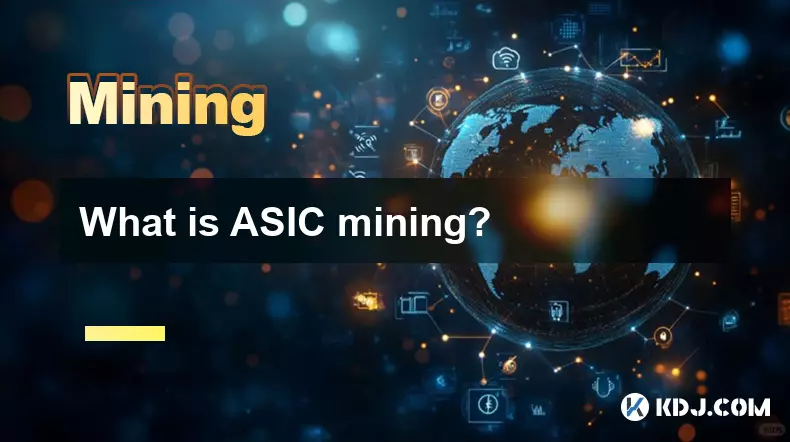
What is ASIC mining?
Sep 09,2025 at 12:00am
Understanding ASIC Mining in Cryptocurrency1. ASIC stands for Application-Specific Integrated Circuit, a type of hardware specifically designed to per...
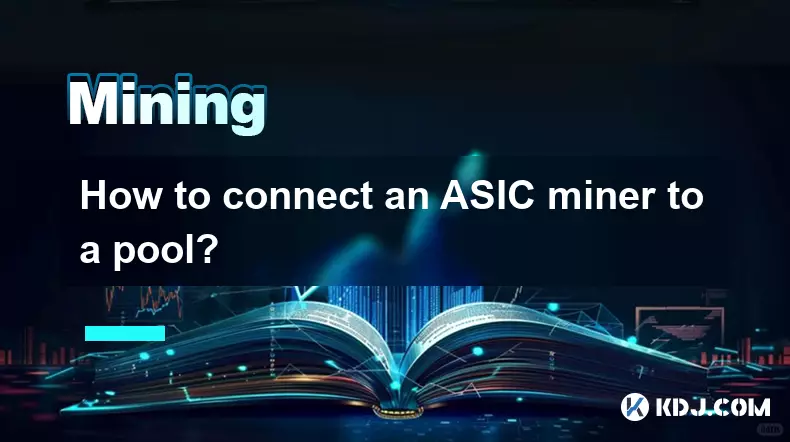
How to connect an ASIC miner to a pool?
Sep 06,2025 at 09:55am
Bitcoin's Role in Decentralized Finance Evolution1. Bitcoin remains the cornerstone of the cryptocurrency ecosystem, providing a foundation for trustl...

How to mine Litecoin?
Sep 07,2025 at 07:00pm
Understanding Litecoin Mining Basics1. Litecoin operates on a decentralized blockchain network that relies on miners to validate transactions and secu...
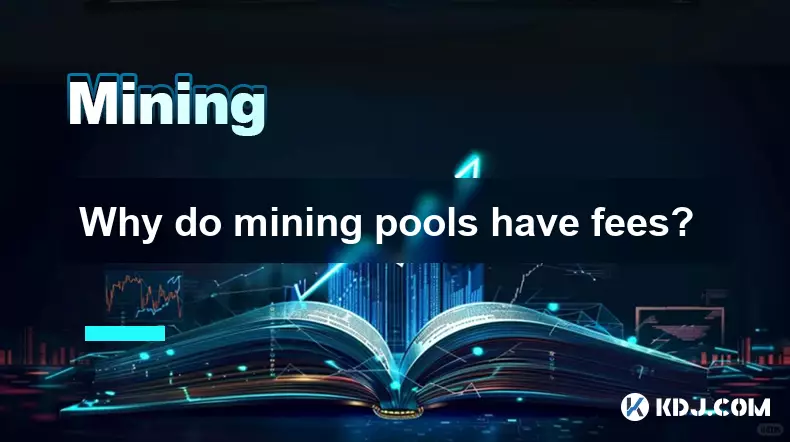
Why do mining pools have fees?
Sep 04,2025 at 09:18pm
Understanding the Role of Mining Pools in Cryptocurrency Networks1. Mining pools aggregate the computational power of multiple miners to increase the ...

What are the main components of an ASIC miner?
Sep 07,2025 at 04:37pm
Decentralized Exchanges Gain Momentum in 20241. Decentralized exchanges (DEXs) have seen a surge in trading volume, surpassing several centralized pla...

What is crypto staking vs mining?
Sep 08,2025 at 11:36pm
Crypto Staking: A Modern Approach to Network Validation1. Crypto staking involves locking up a certain amount of cryptocurrency in a wallet to support...

What is ASIC mining?
Sep 09,2025 at 12:00am
Understanding ASIC Mining in Cryptocurrency1. ASIC stands for Application-Specific Integrated Circuit, a type of hardware specifically designed to per...

How to connect an ASIC miner to a pool?
Sep 06,2025 at 09:55am
Bitcoin's Role in Decentralized Finance Evolution1. Bitcoin remains the cornerstone of the cryptocurrency ecosystem, providing a foundation for trustl...

How to mine Litecoin?
Sep 07,2025 at 07:00pm
Understanding Litecoin Mining Basics1. Litecoin operates on a decentralized blockchain network that relies on miners to validate transactions and secu...

Why do mining pools have fees?
Sep 04,2025 at 09:18pm
Understanding the Role of Mining Pools in Cryptocurrency Networks1. Mining pools aggregate the computational power of multiple miners to increase the ...

What are the main components of an ASIC miner?
Sep 07,2025 at 04:37pm
Decentralized Exchanges Gain Momentum in 20241. Decentralized exchanges (DEXs) have seen a surge in trading volume, surpassing several centralized pla...
See all articles
























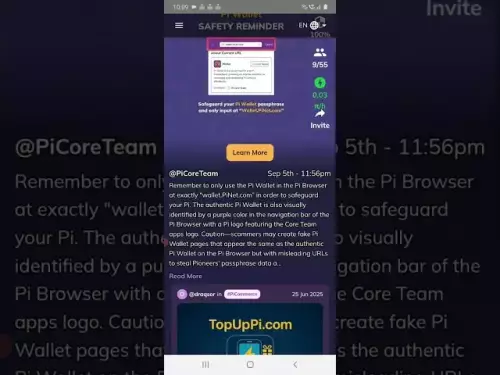
![[Pycoin] PI Coin -US President (Trump) Declaration ?? !! 'US' runs first. / Paikoin mining speed acceleration [Pycoin] PI Coin -US President (Trump) Declaration ?? !! 'US' runs first. / Paikoin mining speed acceleration](/uploads/2025/09/08/cryptocurrencies-news/videos/pycoin-pi-coin-president-trump-declaration-runs-paikoin-mining-speed-acceleration/68bed38c01e7a_image_500_375.webp)






























































